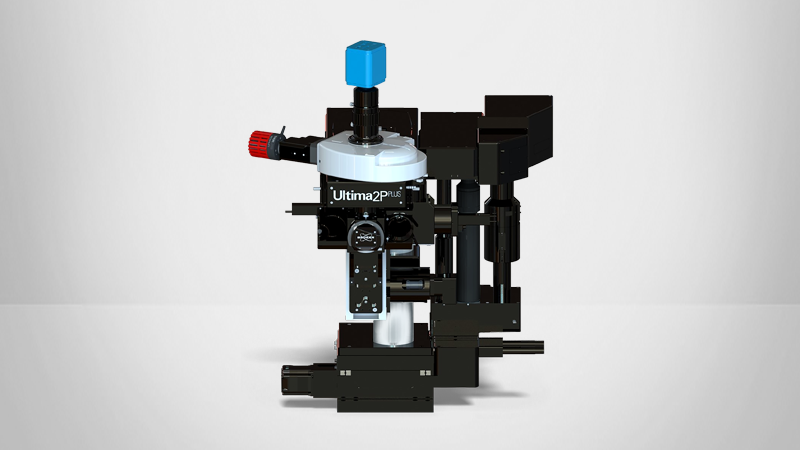NeuraLeap Module for Ultima 2Pplus
Digital Micromirror Device (DMD) Focusing for Ultima Microscopes
The NeuraLeap module provides researchers with a groundbreaking way to image rapidly across a range of depths. By combining an extended depth-of-field laser excitation module with an ultrafast DMD chip, NeuraLeap allows for nearly instantaneous switching between optical planes. Furthermore, it can define multiple excitation planes of varying sizes to selectively image larger volumes in a single optical plane. This module significantly increases the speed and flexibility for the Ultima microscope, thereby enabling researchers to image with greater temporal resolution in the brain.
Ultrafast Z-Focusing Combined with Variable Depth-of-Field Selection
NeuraLeap's DMD allows rapid (20 µs) switching between planes, enabling the collection of multiple discrete planes across hundreds of microns of depth. Furthermore, NeuraLeap has a narrow mode and a wide mode that supports larger arbitrary jumps. With no added wait time for the Z-device, this greatly increases the rate at which samples can be scanned in Z. There is no additional delay for larger jumps, and planes can be arbitrarily selected for imaging, giving researchers more flexibility when it comes to how volumes are collected.
Image with a large, variable depth-of-field
The NeuraLeap module can generate an elongated illumination spot that will excite fluorophores in planes up to 150 microns thick with a 16x objective, allowing for resonant-rate imaging of volumes where optical mixing of the signals is not a concern. In addition to greatly increasing frame rates for volumes, this larger illumination plane also helps prevent signal changes due to Z motions in samples, making data collection more reliable.
Select multiple planes to image simultaneously
NeuraLeap can produce two discrete imaging spots along its full depth of field, allowing researchers to select multiple planes of interest to image at resonant-rate speeds, separated by hundreds of microns. Complex applications, such as voltage imaging or where cells must be imaged across large distances in Z with high temporal precision, are now feasible with this dual-plane imaging feature.
